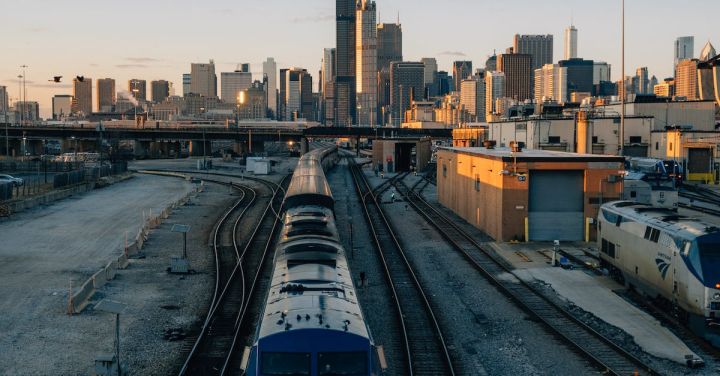Trains have long been a captivating mode of transportation, carrying passengers through vast landscapes and connecting distant cities. But beyond their practical purpose, trains have also played a significant role in the world of cinema. From thrilling action sequences to poignant moments of reflection, trains have provided the backdrop for some of the most memorable scenes in blockbuster films.
One cannot discuss trains in movies without mentioning the iconic “Train Chase” in the 1993 film “The Fugitive.” Starring Harrison Ford as Dr. Richard Kimble, this heart-pounding scene showcases the intensity and suspense that can be achieved when a train is part of the action. As Kimble frantically tries to evade capture, the train becomes an accomplice, hurtling through tunnels and over bridges, adding an extra layer of danger to an already adrenaline-fueled chase.
In a stark contrast to the fast-paced action of “The Fugitive,” the 2010 film “Inception” presents a dreamlike sequence set on a train. Directed by Christopher Nolan, this mind-bending thriller uses the train as a metaphor for the characters’ subconscious. As the train barrels through a deserted landscape, the dreamers navigate the surreal terrain, blurring the lines between reality and imagination. This scene is a testament to the power of trains as visual metaphors, capable of conveying complex emotions and ideas.
Trains have also been used to evoke a sense of nostalgia and romanticism in cinema. Take, for example, the 1945 classic “Brief Encounter.” Directed by David Lean, this British film tells the story of a chance meeting between two strangers on a train platform. As their relationship develops, the train becomes a symbol of their forbidden love, a means of escape from their mundane lives. The sound of the train’s whistle and the rhythmic clattering of the wheels on the tracks create a hypnotic backdrop to their bittersweet affair.
In recent years, trains have made a comeback in the superhero genre. The 2013 film “Snowpiercer” takes place entirely on a train, which serves as a post-apocalyptic world in motion. Directed by Bong Joon-ho, this dystopian thriller explores themes of class struggle and social inequality, using the train as a microcosm of society. As the characters navigate through different train compartments, each representing a different socio-economic class, the film becomes a powerful allegory for the human condition.
Trains have also been featured prominently in the realm of animated films. The 1995 masterpiece “Toy Story” includes a memorable train scene, where Woody and Buzz Lightyear find themselves on a miniature train set in the home of the villainous Sid. As they desperately try to escape, the train becomes a symbol of freedom and the promise of returning home. This scene not only adds excitement to the narrative but also showcases the versatility of trains as cinematic devices across genres.
In conclusion, trains have left an indelible mark on the world of blockbuster films. From heart-stopping action sequences to poignant moments of reflection, trains have played a pivotal role in shaping the narrative and atmosphere of these movies. Whether as a backdrop for thrilling chases or a metaphor for the subconscious, trains have proven to be a versatile and captivating element in the cinematic experience. So, the next time you embark on a cinematic journey, keep an eye out for the trains that may just steal the show.
